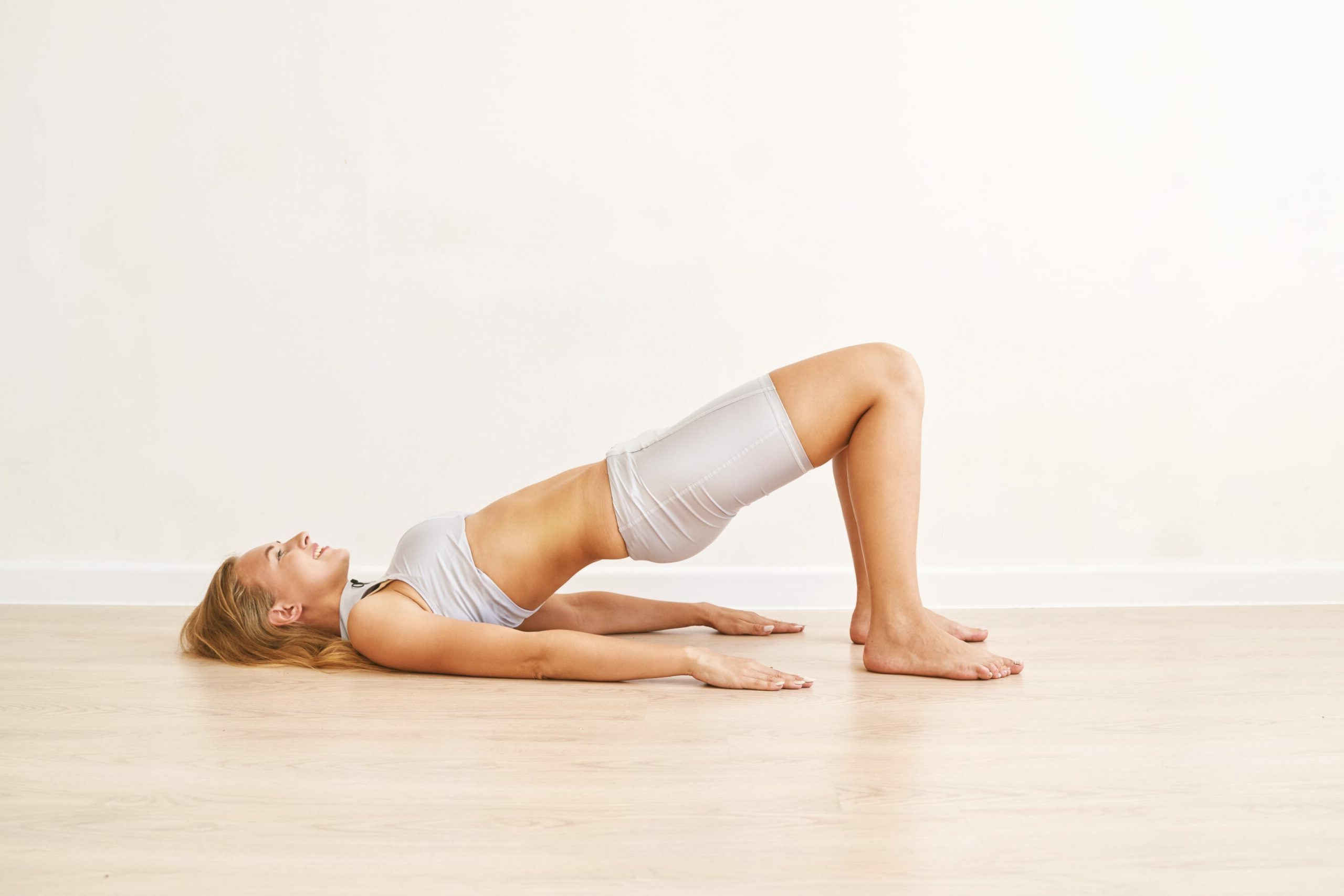Have you ever completed a HIIT workout, Zumba class or squat challenge and felt a little pee come out? If so, it may be down to having a weak pelvic floor.
It’s very common for women to experience changes in their bodies both as they carry new life into the world and as they begin to age, and incontinence is often a result of this.
Despite bladder weakness affecting 1 in 3 women, many are unaware as to what the pelvic floor is, let alone how to strengthen it.
So, what’s the pelvic floor you ask?
Your Pelvic Floor
Marica Carleschi, european consumer marketing manager at INNOVO, and part-time yoga instructor, explains that the pelvic floor is a key set of deep muscles situated in the pelvis, running from the frontal pubic bone to the base of the spine.
Shaped like a basin, the pelvic floor holds all of the pelvic organs (uterus, vagina, bowel & bladder) in place, and supports the bladder to provide control when you urinate.
In addition to providing control over bladder leaks, strong pelvic floor muscles can also provide you with stronger core strength in the abs, improved sexual sensitivity, and better posture, to name a few.
The good news is there are lots of exercises that will help you engage this core set of muscles, including yoga.
Yoga and Your Pelvic Floor
Yoga is a calming, meditative practice that can fit easily into your busy schedule and can provide a great support to your pelvic floor strengthening regime.
Here are some of the best yoga exercises to help strengthen your pelvic floor.
Mountain Pose (Tadasana)
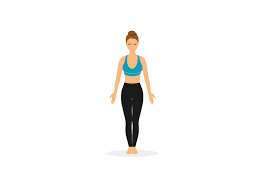
Start by standing, with your feet hip distance apart and your hands resting at your sides. Place a yoga block (or a thick book or pillow) between your thighs. Engage your inner thighs and try to lift the block upwards.
Chair Pose (Utkatasana)
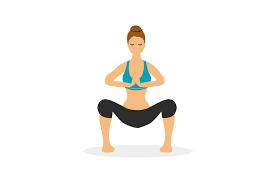
Start in Mountain Pose (the posture above), with your arms stretched upwards, and the tips of your fingers lengthened towards the ceiling. Bend your knees, keeping your back as straight as possible, and push your hips back into a squat, as though you’re sitting down into a chair.
Keep your heels connected to the floor, without your hips dipping any lower than your knees. Hold the posture for a couple of breaths.
Try to lift your pelvic floor upwards, as though you were trying to hold in a wee. Straighten up again slowly. Repeat as many times as you feel comfortable.
Warrior II (Virabhadrasana II)
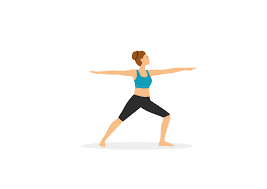
Starting in Mountain Pose, step your right foot forwards (with your front & back foot about 1 metre apart). Lift your arms straight out to the sides so they are parallel to the floor.
Keep your right foot straight, but turn your left foot out slightly so that your toes are pointing away from your body.
Bend the right knee over the right ankle, keeping your left leg straight. Tighten your tummy as though you are pressing your belly button to your spine, and pull up the pelvic floor as we did in chair pose.
Hold for about 30 seconds, then straighten the right leg. Hold and repeat as many times as you feel comfortable, and then try on the other side.
Happy Baby (Ananda Balasana)
Place a yoga mat or thick towel down flat on the floor. Lie on the mat on your back, and draw your knees in towards your chest. Hold on to your knees, inhale deeply & exhale.
Grab the outside edges of your feet, or wrap your index and middle around your big toes, and pull your knees (bent) out to the side, trying to pull the knees as closely to the floor as you can without causing any discomfort. Pull your feet back with your hands.
Tighten your tummy as though you are pressing your belly button to your spine, and pull up the pelvic floor as we did in chair pose.
You can rock from side to side to give your back a lovely massage. Hold for as long as you feel comfortable, then release your legs straight to the floor gently, with your arms at your side to relax.
Locust pose (Salabhasana)
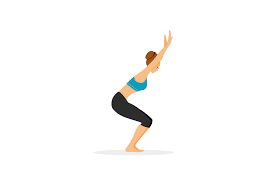
This posture works both the glutes, buttocks & the pelvic floor – 3 for the price of 1!
Lie flat on your tummy on your mat, with your legs together and your arms at your sides. Rest your nose & forehead gently on your mat. Inhale and lift your head, chest, arms, knees and feet off the floor.
Squeeze your tummy muscles, glutes & buttocks to help lift everything up off the floor. Keep your legs straight out, hold for about 30 seconds, and then gently release back down. Repeat as desired.
Boat pose (Navasana)
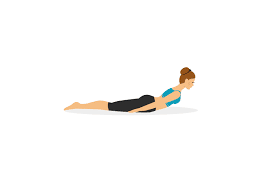
Start sitting on the floor with both knees as close as possible to the chest, hands behind the knees. Point the toes, feel the ground with both sitting bones, take a deep breath in and push the chest towards the knees, keep the shoulders away from the ears.
Exhale and lift both feet up until parallel to the ground. Keep pushing the chest towards the knees.
Options: You can keep your hands behind the knees for support or extend both arms forward. You can keep the knees bent or straighten both legs. Stay for 5 breaths.
Watch out: do not curve the spine and fold in, keep pushing the chest forward trying to reduce the gap between the chest and the thighs.
Yoga squat (Malasana)
Start in your forward fold with both hands down, shoulder distance apart and feet hip distance apart.
Turn the toes to face out 45 degrees angle. Bend the knees and lower your hips toward the floor. Lift the chest. Lift both hands and press the palms together in front of your chest.
Push the elbows into your inner thighs and lift the chest a bit more. Remember to keep your spine long, keep your shoulders away from the ears, shoulder blades towards each other, and the neck is long.
Bridge (Setu Bandha Sarvangasana)
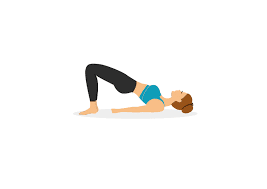
Start lying down on your back, arms alongside the body with palms facing down. Bend the knees and place the heels as close as possible to your sitting bones, feet hip distance apart.
If you have a block, place it between your knees. Turn the toes slightly in. Take a deep inhale and on the exhale tuck the tailbone under, engage the glutes and lift your hips and chest up.
Squeeze the block between the knees. Think about elongating your spine and start actively pressing the palms and the forearms down on the mat to find more lift. Look up at the ceiling. Five breaths.
The breath is king!
To breathe efficiently the pelvic floor must be involved, and to exercise your pelvic floor efficiently, the breath must be involved. Your pelvic floor moves in a dance with your diaphragm when you breathe.
When we breathe in, the diaphragm moves down, and so does the pelvic floor; when we breathe out, they both move up.
Start observing this connection and then start bringing the focus on your pelvic floor. Inhale and keep your pelvic floor relaxed, exhale and engage your pelvic floor by lifting it – How? Imagine you are holding a wee.
With a bit of practice, you can begin to accentuate each end of the breath cycle, relaxing and engaging, relaxing and engaging,
Interested in some more pelvic floor exercises? Check out Innovo’s invisible workouts; a series of podcasts which can help you strengthen your pelvic floor no matter where you are.
